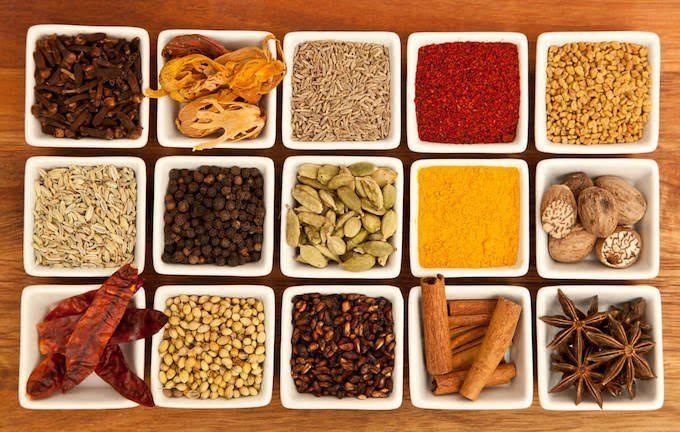India is known for its diverse and flavorful cuisine, which is heavily influenced by a wide variety of spices. Some of the most commonly used spices in Indian cooking include cumin, turmeric, coriander, ginger, and cardamom. Cumin and turmeric are often used to add a warm, earthy flavor to dishes, while coriander and ginger are used for their fresh and slightly citrusy taste. Cardamom is used both as a spice and a flavoring for sweet dishes, and is also a common ingredient in Indian chai tea. Other commonly used spices in Indian cuisine include cinnamon, cloves, nutmeg, and black pepper. Some of these spices are also used in traditional Ayurvedic medicine as a remedy for various ailments.
Indian cuisine is renowned for its rich and diverse flavors, which are heavily influenced by a wide variety of spices. Spices are not only used to add flavor to dishes, but also to enhance their nutritional value and provide a host of health benefits. In this article, we will take a closer look at some of the most commonly used spices in Indian cooking, and explore their flavor profiles, nutritional benefits, and traditional uses.
Cumin, turmeric, coriander, ginger, and cardamom are among the most widely used spices in Indian cooking. Cumin is known for its warm, earthy flavor and is often used in spice blends like garam masala. Turmeric is known for its bright yellow color and is used for its anti-inflammatory properties. Coriander, used in both its seed and leaf form, adds a fresh, slightly citrusy taste to dishes. Ginger adds a warm, spicy flavor and is also used as a natural remedy for various ailments. Cardamom, used as a spice and flavoring for sweet dishes, is also a common ingredient in Indian chai tea.
Cinnamon, cloves, nutmeg, and black pepper are also commonly used spices in Indian cooking. Cinnamon adds a warm, woody flavor to dishes, particularly sweet dishes like desserts. Cloves add a warm, spicy flavor and are also used as a natural remedy for various ailments. Nutmeg adds a warm, nutty flavor to dishes, particularly sweet dishes like desserts. Black pepper adds a warm, spicy flavor and is also used as a natural remedy for various ailments.
Fenugreek, used in dry form as well as leaves, has a strong aroma and slightly bitter taste. It is mostly used in tempering, and added to the oil before adding other ingredients. Mustard seeds are also used in tempering and added to the oil before adding other ingredients.
In addition to adding flavor and nutrition to dishes, many of these spices are also used in traditional Ayurvedic medicine as natural remedies for various ailments. For example, turmeric is believed to have anti-inflammatory properties and is often used to treat conditions such as arthritis and digestive issues.
Indian spices play a vital role in the rich and diverse flavors of Indian cuisine. They not only add flavor, but also enhance nutritional value and provide a host of health benefits. Next time you cook an Indian dish, take the time to experiment with different spices and explore the unique flavor profiles each one has to offer.
Are you ready to pitch your content on the Indian Blog? Submit your guest post here.


